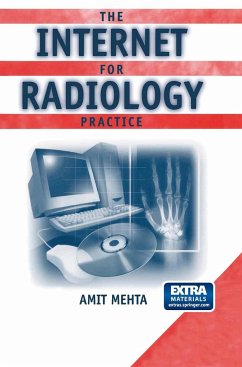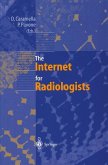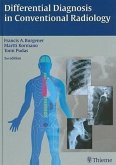The Internet has proven to be a great resource for the medical community. It has specifically had a great impact on the practice of Radiology. It has enabled the proliferation, installation, and acceptance of adjunct technologies such as Picture Archiving (PACS), electronic medical record (EMR) and Voice Recognition (VR). The number of radiology-specific web sites just 5 years ago was about 30. A recent compilation now numbers in the thousands. Each day brings a new use for the Internet both from the academic aspect as well as commercial applications. Computer technology and the Internet have revolutionized the way radiologists work on a daily basis. All aspects of the Internet and related technologies are explained in the book.
The Internet is the ultimate amalgamation of the Information Age and the C- munication Age. It is a technology that took 40 years to become an overnight sensation, moving from the province of computer geeks to household utility in short order, once it was discovered. We have gone from thinking a URL was a form of alien presence to viewing it as a natural footnote to bus advertising. Like the Internet itself, interest in computing, both local and distant, has grown exponentially. Now grandmothers send e-mails to their stockbrokers, meals are planned and the groceries purchased across the Web, and music videos can be previewed or concert tickets purchased-all with the help of the Internet. When our children come home from school, they are as likely to sign on to the Int- net as they are to turn on the television. The Internet is a universal commodity, for those with access.
The Internet is the ultimate amalgamation of the Information Age and the C- munication Age. It is a technology that took 40 years to become an overnight sensation, moving from the province of computer geeks to household utility in short order, once it was discovered. We have gone from thinking a URL was a form of alien presence to viewing it as a natural footnote to bus advertising. Like the Internet itself, interest in computing, both local and distant, has grown exponentially. Now grandmothers send e-mails to their stockbrokers, meals are planned and the groceries purchased across the Web, and music videos can be previewed or concert tickets purchased-all with the help of the Internet. When our children come home from school, they are as likely to sign on to the Int- net as they are to turn on the television. The Internet is a universal commodity, for those with access.
From the reviews:
"Part one of the book (31 pages) begins by outlining the history of the World Wide Web, the hardware and software involved and how it is all combined to form active networks. ... Part two (15 pages) is concerned with 'tools of utility' ... . Part three (10 pages) covers the technologies revolutionising radiology. ... Part four provides 69 pages of radiology website addresses. ... It should prove useful for registrars embarking on the radiology route, as it would for undergraduate radiography students." (D Peach, RAD Magazine, October, 2003)
"This book is part of a series covering the use of Internet in various medical specialities. ... The range of topics covered is wide. The text is generally well written and easy to read. The list of websites is very valuable. ... This book can be recommended as an easily read overview of Internet-related computer use in radiology, with short descriptions of relevant terms, techniques and applications." (Andreas Abildgaard, Acta Radiologica, Vol. 44 (5), 2003)
"Part one of the book (31 pages) begins by outlining the history of the World Wide Web, the hardware and software involved and how it is all combined to form active networks. ... Part two (15 pages) is concerned with 'tools of utility' ... . Part three (10 pages) covers the technologies revolutionising radiology. ... Part four provides 69 pages of radiology website addresses. ... It should prove useful for registrars embarking on the radiology route, as it would for undergraduate radiography students." (D Peach, RAD Magazine, October, 2003)
"This book is part of a series covering the use of Internet in various medical specialities. ... The range of topics covered is wide. The text is generally well written and easy to read. The list of websites is very valuable. ... This book can be recommended as an easily read overview of Internet-related computer use in radiology, with short descriptions of relevant terms, techniques and applications." (Andreas Abildgaard, Acta Radiologica, Vol. 44 (5), 2003)








